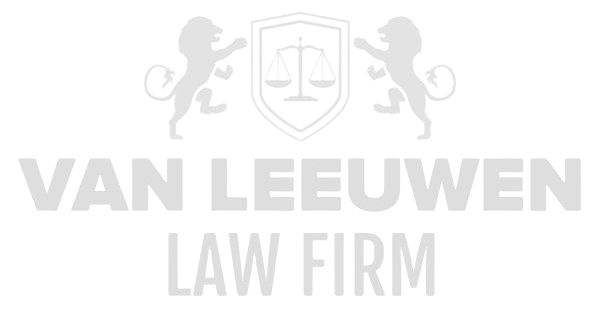In a world where financial markets are evolving rapidly, cross-border capital flows exhibit unprecedented dynamics, and technological innovations have profoundly transformed the landscape of economic transactions, it is no longer sufficient to address financial crime with merely fragmented and reactive measures. Financial-economic crime does not merely manifest as a legal or economic anomaly but constitutes a structural threat to the foundations of the rule of law, institutional integrity, and public trust. In this light, adopting an integrated vision is not an optional choice but a legal and administrative necessity. This approach requires a fundamental revision of existing strategies, whereby the interplay of prevention, detection, investigation, enforcement, and governance is embedded within a coherent framework that functions both strategically and operationally.
From this perspective, it must be acknowledged that financial crime — in all its forms, from money laundering and corruption to investment fraud and tax evasion — is not merely the result of individual misconduct but is often facilitated by systemic shortcomings, inadequate compliance, and structural weaknesses in oversight and regulation. It is precisely this interconnection of factors that makes a purely repressive approach inadequate. An integrated vision requires a profound understanding of how legal, economic, technical, and ethical factors mutually influence and reinforce each other. It implies a strategic approach in which compliance, corporate governance, transparency, technological infrastructure, and legal enforcement are no longer treated as separate domains but as interdependent links in a broader chain of risk management and institutional resilience.
The Impact of Accusations on Clients
The accusation of financial or economic crime against a company, a statutory director, or a supervisory body is an event with far-reaching consequences that extend beyond the legal domain and resonate equally in reputation, business operations, financing, and stakeholder confidence. Such an accusation does not represent an isolated incident but acts as a splinter in the social and economic fabric in which the involved entity operates. Public perception, often fueled by media attention and social indignation, acts as a catalyst for reputational damage that spreads rapidly, even before the legal facts have been established.
The consequences for the individuals involved are no less profound. Directors or supervisors facing suspicions or prosecution confront a legal reality in which the presumption of innocence often gives way to public condemnation. Personal integrity is questioned, professional careers come to an abrupt halt, and social stigma is often irreversible. Furthermore, this leads to internal tensions within the organization, raising questions about whether the director can remain in office or whether immediate suspension or even dismissal is necessary to withstand external pressure.
The operational continuity of the company itself also comes under serious threat. Ongoing contracts may be suspended or terminated, collaborations may falter, financing lines withdrawn, and customers and suppliers may retreat. The company finds itself in a state of legal uncertainty and economic stagnation. When authorities further decide to freeze assets, conduct searches of business premises, or impose provisional measures, the damage becomes material and existential. It is in this context that a robust, well-considered, and integrated strategy is essential to confront this complex multidimensional crisis.
The Interconnection of National and International Jurisdictions
Financial-economic crime rarely respects national borders. On the contrary: it thrives precisely because of jurisdictional fragmentation, multilateral ambiguities, and discrepancies in supervisory structures. Multinational companies and cross-border financial institutions operate in an environment where disparate legal systems overlap, complement, and sometimes contradict each other. Within this tension, regulators, investigative bodies, and tax authorities act with increasing assertiveness and cooperation, creating a complex legal playing field in which the defense strategy must be coordinated not only nationally but above all internationally.
Practice shows that the principles of mutual legal assistance, information exchange, and extraterritorial jurisdiction are increasingly used as instruments to combat cross-border fraud, corruption, and money laundering. At the same time, this creates legal gray areas in which principles such as ne bis in idem (double jeopardy), legality, and state sovereignty come under pressure. This requires any legal approach not only to have knowledge of national substantive and procedural criminal law but also deep expertise in international public law, treaty law, and interstate cooperation.
Within this context, the defense of clients must be conducted with a sharp focus on the international dimension of the accusations. The legal strategy must anticipate parallel procedures, simultaneous investigations by foreign authorities, and potential extradition requests or freezing of foreign assets. Without thorough analysis of these international risks, one risks becoming entangled in a web of legal complications whose consequences may be more far-reaching than the original accusation.
The Role of Integrity and Governance Within the Enterprise
Integrity and sound corporate governance form the foundation of every robust prevention strategy against financial-economic crime. When directors and supervisors fulfill their duties from a deeply rooted sense of responsibility, transparency, and lawfulness, an organizational culture arises that resists undue influence, conflicts of interest, and erosion of standards. Governance in this respect is not merely a formal system of supervisory bodies and procedures but a living mechanism of internal self-regulation and moral leadership.
In this context, compliance structures, codes of conduct, integrity programs, and whistleblowing channels play a key role in early identification and neutralization of risks. However, these instruments should not be understood as cosmetic measures or tick-the-box obligations but as vital components of a comprehensive integrity policy. Their effectiveness is closely linked to the extent to which they are embedded in the organization’s DNA and supported by the company’s top management.
A company capable of responding adequately to the first signals of possible irregularities, conducting internal investigations, and, if necessary, involving external specialists, demonstrates resilience and responsibility. At the same time, such a governance model functions as a mitigating factor in criminal law assessment. Authorities and judges consider whether a company has done everything reasonably expected to prevent criminal acts.
The Importance of Forensic Investigation and Legal Analysis
In cases where suspicions of financial-economic misconduct arise, forensic investigation constitutes the culmination of factual truth-finding. This type of investigation goes beyond classical audit methods, as it is not limited to financial control but focuses on reconstructing facts, analyzing transaction flows, identifying irregularities, and establishing potential involvement of specific individuals. Forensic investigation is a specialized field operating at the intersection of accounting, legal analysis, digital technology, and behavioral science.
The legal relevance of forensic investigation is twofold. On the one hand, it provides the defense with insight into potential weaknesses in the prosecution’s case. On the other hand, it offers the opportunity to develop an independent narrative, based on factual substantiation and legal interpretation. This dual function makes forensic investigation an essential tool within the defense strategy. It enables the lawyer to act not merely reactively but proactively to control the facts and thus help define the legal framework.
At the same time, it is important that such an investigation is conducted under the responsibility of the lawyer so that the results fall under attorney-client privilege and cannot be requested by the Public Prosecution Service. Only then can it be guaranteed that the investigation truly serves the defense and does not inadvertently fall into the hands of the opposing party. This strategic dimension again underscores the necessity of an integrated approach in which legal, technical, and tactical considerations go hand in hand.
The Preventive Function of Risk Management and Internal Control Mechanisms
Whereas repressive measures focus on sanctioning offenses already committed, the core of a sustainable strategy against financial crime lies in prevention. Prevention implies the ability to timely identify, assess, and mitigate potential risks before they materialize into criminal acts or administrative derailments. In this context, risk management is not merely an administrative obligation but a strategic weapon in the fight against undermining economic behaviors. Particularly within complex organizational structures, where authorities are delegated and responsibilities decentralized, it is essential to embed permanent control mechanisms that detect signals of deviant behavior at an early stage.
Effective risk management policy requires more than just formal risk inventories. It demands an in-depth analysis of internal processes, communication lines, reporting structures, and decision-making procedures. Attention must be paid to both quantitative and qualitative risks, as well as to so-called ‘soft signals’ — behaviors, attitude differences, or informal patterns — that may indicate integrity risks. In that respect, a robust internal control system functions not only as a legal defense tool but also as a safeguard for the institutional health of the organization.
Finally, it must be emphasized that prevention cannot succeed without involvement from the highest level of the organization. Directors and supervisors must lead by example, not only in words but especially in deeds. They serve as the moral compass of the enterprise and bear responsibility for fostering a culture of openness, accountability, and legality. Only then does an environment arise in which deviations are not ignored but are timely detected, discussed, and corrected.
The Importance of a Strategically Oriented Defense
When a company or director faces a formal suspicion, merely mounting a technical legal defense is insufficient. An effective defense requires a strategically oriented approach that extends beyond the court documents. The legal file must be placed within a broader context of interests, reputational damage, media attention, shareholder expectations, and international implications. In this context, the defense must not only refute the formal accusations but simultaneously maintain the client’s position on all relevant fronts — legal, economic, social, and administrative.
This strategy begins with a meticulous analysis of the factual complex. Every detail is scrutinized, every email weighed, every statement cross-checked against external sources. Subsequently, a legal roadmap is charted, in which all scenarios — from dismissal to settlement, from prosecution to acquittal — are calculated and provided with concrete action points. At the same time, one must continuously anticipate the tactics of the Public Prosecution Service, media statements, parallel civil or administrative procedures, and possible international dimensions of the case.
Here, the lawyer must not shy away from a strong confrontation with the government when necessary, but always operate from a position of legal superiority, substantiated argumentation, and intellectual discipline. Simultaneously, communication with stakeholders — shareholders, supervisory directors, financiers — must be coordinated with the legal course. Especially in the context of a criminal threat, consistent and well-considered communication is essential to prevent escalation and erosion of reputation.
The Interaction Between Public Opinion and Legal Truth-Finding
In today’s era, any suspicion of financial misconduct immediately becomes the subject of public debate. Traditional and social media reinforce each other in a spiral of outrage, speculation, and moral condemnation. This dynamic fundamentally threatens the rule-of-law principle of the presumption of innocence. In many cases, public opinion has already rendered judgment before the judge has even begun substantive assessment. For the accused, this ‘trial by media’ constitutes an additional battlefield on which reputations are shattered, relationships disrupted, and legal strategies must be adjusted.
This situation requires that the legal defense not only focus on the legal file but also take into account the public discourse. The lawyer in this context becomes not only a legal advisor but also a strategist, spokesperson, and guardian of the client’s reputation. This means that press releases, responses to leaks, positioning in public debate, and timing of public communication must be carefully considered. Sometimes silence is the best strategy, but in other cases, a powerful public stance is necessary to turn the narrative and limit reputational damage.
Frequently, this interplay creates a conflation of fact and fiction, suggestion and reality. Precisely then, it is important to guard the legal framework with surgical precision and prevent media and public opinion from preceding or even influencing the factual and legal assessment in the courtroom. The lawyer acts here as guardian of the rule-of-law order, with the primary task: ensuring a fair trial, regardless of the storm outside.
The Role of Supervisory and Enforcement Authorities
Supervisory bodies and enforcement agencies play a central role in combating financial-economic crime. Their powers have been significantly expanded and deepened in recent years. Increasingly, they possess far-reaching investigative powers, including access to confidential documents, imposing fines, initiating civil or administrative procedures, and in some cases referring cases to the Public Prosecution Service. This institutional assertiveness requires companies and directors involved to maintain constant vigilance and a deep understanding of the playing field on which they operate.
However, the actions of supervisory authorities are not free from risks and legal controversies. The line between supervision and investigation increasingly blurs, putting fundamental rights and safeguards under pressure. Consider situations where information obtained under administrative coercion is then used as evidence in criminal proceedings. Such constructions raise fundamental questions about legality, proportionality, and the separation of powers. In that respect, the defense must be alert to procedural irregularities and capable of taking legal countermeasures when the law is exceeded.
Moreover, contact with supervisory authorities requires a strategic and legally well-considered approach. It is rarely advisable to seek direct confrontation; instead, structured communication, legal argumentation, and, if necessary, formal procedures should be employed to reach a solution that optimally protects the client’s interests. At the same time, one must always be prepared for the scenario that supervisors decide on disclosure, enforcement, or prosecution — and have a comprehensive legal and communicative strategy ready.
Finally: The Importance of Legal Excellence and Moral Leadership
In the fight against financial-economic crime, legal excellence, strategic acumen, and moral leadership are crucial. Every case, no matter how complex or charged, demands thorough fact analysis, a deep understanding of legal frameworks, and an unwavering commitment to justice. The lawyer functions as a beacon of the rule of law, an architect of defense strategy, and a guardian of human dignity within the legal process.
But legal expertise alone is not enough. In a context of social unrest, administrative pressure, and economic interests, it is the ethical integrity of the defender that makes the difference. The one who manages to do justice under pressure, who with intellectual discipline and strategic ingenuity advocates for the client’s interests without losing sight of fundamental legal values, not only serves the client but also the rule of law.
An integral vision of financial-economic crime — thoughtful, broadly supported, and legally flawless — forms the only way forward. In a time when trust in institutions falters, it is precisely this vision that makes stability, justice, and recovery possible. The lawyer, armed with knowledge, conviction, and steadfastness, does not stand on the sidelines in this struggle but in the center of the legal and moral arena. And rightly so.








